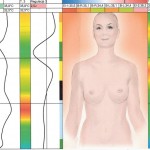 I. STRD can be the starting point for a diverse look at the man, eg. for analysis psychoenergetic. Thus allowing to speak to representatives of different therapeutic approaches, speaking exactly the same, ie. Independent of the measurement result of one man.
I. STRD can be the starting point for a diverse look at the man, eg. for analysis psychoenergetic. Thus allowing to speak to representatives of different therapeutic approaches, speaking exactly the same, ie. Independent of the measurement result of one man.
II. STR reflects the biological functioning - energetic man in relation to the intellect - emotion - action (Instinct). Analysis psychoenergetic is a way of interpreting the results STRD. Use analysis psychoenergetycznej work psychologist:
1) Allows you to specify the basic personality structure of the patient (type of sensory, emotional, behavioral), and at the same time reflects the biological basis of personality. Types so dedicated correspond with other classifications psychological
2) You can determine the direction of the therapy, shows the points from which to begin therapy to strengthen the patient so that he could work on a deeper level.
3) This method treats equally somatic patients and so. anxiety.
a. The patient anxiety usually deeply regresuje (the center consciousness moves to the traumas of life, childbirth, ancestral, egregorowych). Then it is important to objectively assess the state of the so-called. left-hemispheric evaluation to assess the overall condition of the patient and the general direction of therapy. Large fear is usually accompanied by a large regression.
b. The patient somatic denying your emotions, can see in the chart thermography, the distribution of energy in the body. This information gives the patient a certain level of basic security in the vision of their situation. Rating left-hemispheric, considered by many to be more scientific and objective, gives information about right-hemispheric aspects, ie. The emotions, instincts, and cognitive openness.
4) Allows you to evaluate the energy status of the patient and thereby determine when they work with a patient somatic methods, which require a lot of energy for integration topics.
5) Indicates the energy state of individual body parts (floors nervous system) and specify the following mental functions:
a. The functioning of the right and left hemispheres.
b. The drive and mental ability to communicate (assertiveness - withdrawal - aggression).
c. The performance of the emotional range of emotions.
d. The level of personal power and efficiency.
e. The strength of instinct, ie. the overall level of physical energy at any given time
6) provides knowledge about the energy state of organs and body systems (eg. Reproductive tract, etc.).
7) Organizes the process of therapeutic hypotheses and nothing at the same time it is not limited (no discussion of what is visible). The limitation and the only confirmation of the work are the reactions of the patient.










